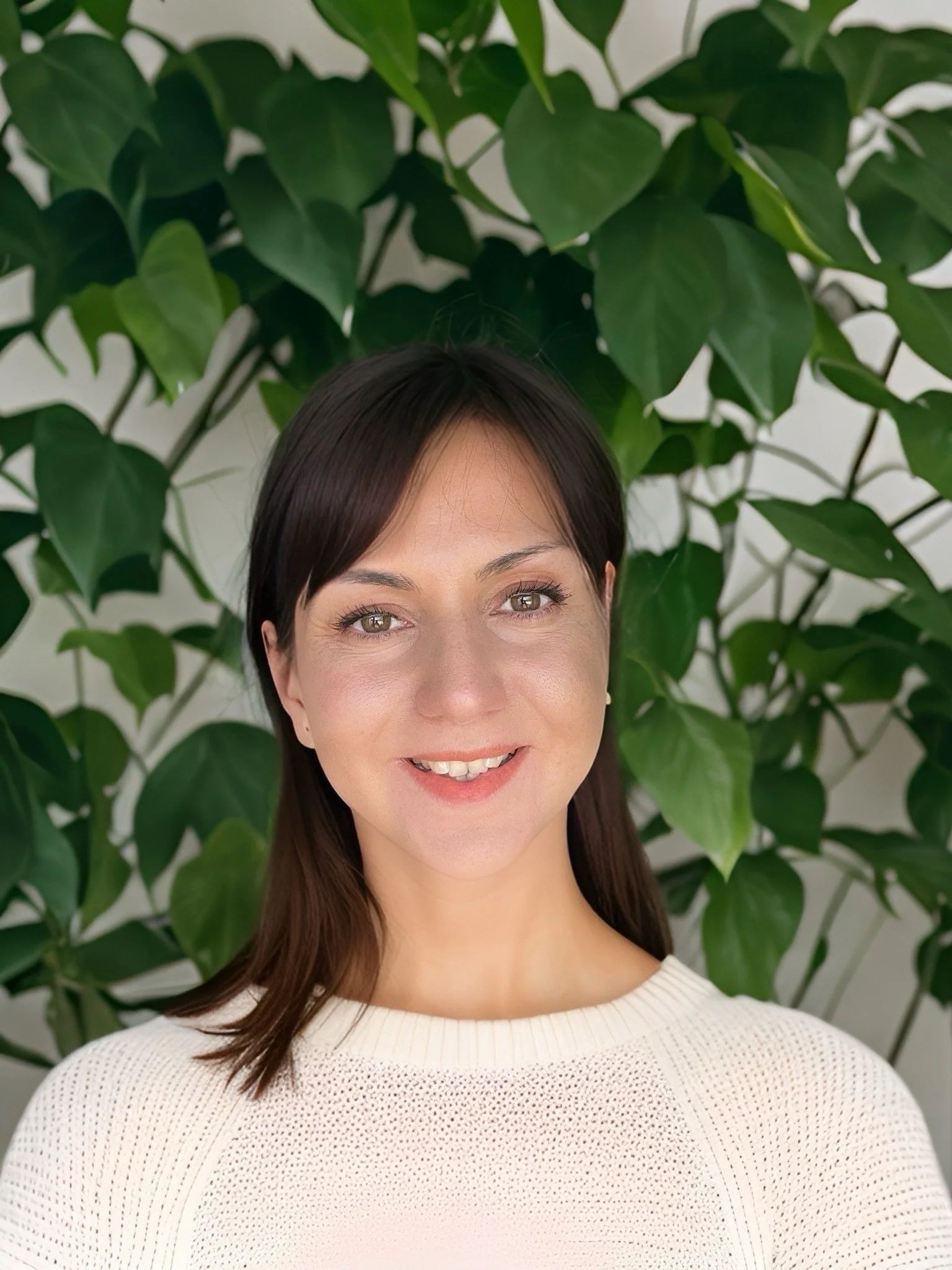Welcome to Epiphany Therapy !
Where making you feel incredible is our top priority.
Previous clients report reduced fear and anxiety, relief from anger and worry, freedom from toxic relationships, understanding their relationship patterns, increased confidence, self-esteem and self-control, loving connections with others, relief from emotional addiction; powerful energy shifts and a sense of calm and inner peace, amongst many other improvements.
I do everything in my power to allow your natural strength to shine through. During therapy, we dive deep into the core of the issue, reframing the roots of your challenges and empowering you to grow from them.
Read on for more information, or - if you’re ready for your Zoom call - book your free consultation by clicking this button:

RTT Therapy Benefits:
-
Rapid Transformational Therapy delivers rapid and effective results in a fraction of the time of traditional therapy. In just one 21 day treatment, you experience profound shifts, leading to the outcome you’ve always wanted. Most issues can be significantly improved in just one treatment, some may require two and very few would require three treatments to provide relief for the issue at hand.
-
RTT Therapy goes beyond merely treating surface symptoms: it delves deep into your mind and unravels existing convictions and belief structures. This holistic approach acknowledges the intricate connections between your body, mind, and emotions. By addressing the underlying issues that contribute to your struggles, RTT promotes healing on all levels. It's a therapy that nourishes your entire being and helps you achieve true wholeness.
-
Unlike traditional talk therapies, RTT Therapy taps into the power of your subconscious mind. This is where your beliefs, habits, and self-perception reside. By reprogramming your subconscious patterns, RTT can eliminate self-sabotaging behaviours and reoccurring unpleasant experiences. Through powerful techniques, you'll experience profound shifts in your understanding, which will naturally lead to changes in your thoughts and behaviours.
-
Your healing journey is unique, and RTT recognises that. Each RTT session is custom-tailored to your specific needs and goals. By integrating various therapeutic techniques, such as hypnosis, NLP, Inner Child work and cognitive restructuring, your RTT therapist creates a bespoke experience designed exclusively for you. You and your therapist co-create your experience throughout the treatment, to be the most beneficial to you as an individual.
-
RTT allows you to take control of your life, but to do so in a kind, self-compassionate way. By gaining a deep understanding of your past experiences, you can let go of the inner critic and redefine your future . RTT equips you with the tools and strategies to overcome challenges, manage stress, and create the life you've dreamed of. It's a transformative journey that empowers you to become the master of your own destiny.
-
The true mark of exceptional therapy is its ability to produce lasting results. RTT doesn't just provide temporary relief; it creates sustainable change. By rewiring your subconscious mind and shifting deep-seated beliefs, RTT sets you on a trajectory of long-term life enjoyment and fulfilment. You'll notice positive changes in various areas of your life, as well as overall well-being.

<<< Listen to this meditation for 21 days to instil a greater sense of self-love.
You can learn more about self-love therapy and its healing power here.
Google Reviews

FAQs
-
RTT is a great option for anyone who is looking for a more in-depth, targeted approach to therapy. If you have tried other types of therapy and still wanting to know the reason for why you feel the way you do, then RTT might be the perfect next step.
With a structured 21 days treatment plan that actively works with the subconscious level of the mind, RTT can produce lasting change, providing you cooperate with your therapist - you healing process is a co-creation, and your input is just as important as the therapist’s.
If you are motivated and wanting for things to get better soon, then RTT has great potential to bring you relief and healing.
Who is it NOT for
=> People currently struggling with symptoms of schizophrenia.
=> Those who are not yet ready to start thinking about the solution.
=> Those who do NOT want to know the real cause for the issues troubling them or are not ready to face it, even in controlled, supportive environment.
RTT IS FOR YOU:
If you are hungry for powerful change.
If you’ve tried other forms of therapy and found that they helped somewhat, but you want to dive deeper to resolve the issue completely.
If you are willing to understand the cause and effect of your and other people’s actions, but also willing to detach yourself from past events and other people's opinions.
RTT is for you if you are willing and able to follow a 21 day treatment plan, which will be co-created with you during the session and may involve
- journaling exercises,
- relaxation techniques,
- hanging up affirmations around your home.
RTT is for you if you would enjoy meditating regularly as part of your healing process.
RTT is also for you, if you are keen to cooperate with me, your therapist, in co-creating the best possible solution for you. Remember - we’re on the same team!
RTT is definitely for you if you are excited about Life without the Problem, and would like to believe that positive change is available to you, providing you are given the right tools and support.
If you are still not sure, connect with me and we can talk through your personal life circumstances.
-
As with any therapeutic approach, the effectiveness of RTT may vary depending on the individual, the specific issue being addressed, the therapist's skill, and the client-therapist relationship.
No single therapy method fits all individuals and conditions. Different approaches may be more effective for specific issues and individuals.
It is crucial for individuals seeking therapy to work with qualified and licensed professionals and discuss their specific needs and concerns to determine if RTT or any other therapeutic approach is the most suitable option for them.
One of the remarkable aspects of RTT is its ability to deliver rapid results. While the exact timeline may vary depending on the individual and the complexity of the issue, most clients experience significant shifts after even after one session.
Rapid Transformational Therapy (RTT) can be effective in addressing a wide range of issues and challenges. While this list is not exhaustive, here are some common concerns that can be treated:
Anxiety and panic attacks
Depression and mood disorders
Low self-esteem and lack of confidence
Phobias and fears
Weight management and eating disorders
Addictions and compulsive behaviours
Relationship issues and attachment patterns
Stress and inability to relax
Performance anxiety and public speaking fears
Sleep disorders and insomnia
Procrastination and self-sabotage
Limiting beliefs and self-limiting behaviours
Career and professional development challenges
Lack of self-love and/or self-respect, inability to form a healthy relationship with oneself.
These are just a few examples of the issues that can be effectively addressed through RTT therapy. RTT's ability to access the subconscious mind and reframe beliefs and patterns makes it a versatile and transformative therapeutic approach.
Remember, it's important to consult with a certified RTT therapist who can assess your specific situation and provide personalised guidance.
-
Preparation: Your RTT therapist will create a safe and comfortable environment for the session. They will explain the process, address any questions or concerns you may have, and establish rapport and trust.
Exploration: You and your therapist will engage in a conversation to gain a deeper understanding of the challenges or issues you wish to address. You'll discuss the background, triggers, and patterns associated with your concerns.
Hypnosis Induction: To access the subconscious mind, your therapist will guide you into a relaxed state of hypnosis. Contrary to popular misconceptions, you'll remain fully aware and in control throughout the process. The hypnosis induction allows for deeper access to your subconscious beliefs and memories.
Regression: In the hypnotic state, you'll explore significant memories or events related to your challenges. This regression can help uncover the root causes and beliefs that contribute to your current issues. By revisiting and reframing these experiences, you can release emotional burdens and gain new perspectives.
Cognitive Restructuring: Your therapist will guide you through cognitive restructuring techniques, helping you challenge and reframe negative beliefs and thought patterns. This process involves replacing limiting beliefs with empowering ones, creating new neural pathways and promoting positive change.
Transformation and Empowerment: Building on the insights gained during regression and cognitive restructuring, your therapist will facilitate powerful suggestions and affirmations aligned with your desired outcomes. These suggestions reinforce new beliefs, behaviours, and emotions, promoting profound transformation and empowerment.
Integration and Next Steps: As the session comes to a close, your therapist will help you integrate the transformative experience into your daily life. They may provide personalised tools, strategies, or recordings to support your continued growth and reinforce positive changes.
It's important to note that the exact structure of an RTT session may vary based on the individual and the specific goals being addressed. Your RTT therapist will tailor the session to your unique needs, ensuring that you receive the most effective support on your transformative journey.
Remember, RTT is designed to be a rapid and powerful therapy, offering swift and lasting results. It empowers you to break free from limitations, rewrite your story, and create a life of abundance, joy, peace and fulfilment.
-
It’s important to remember that the effectiveness of any therapy can vary from person to person. Different people respond differently to various therapeutic approaches, so what works for one person may not work for another.
RTT is known for its emphasis on hypnosis and the use of trance states to facilitate rapid change. By accessing the subconscious mind, RTT aims to uncover and reframe negative beliefs and emotions that may be contributing to your challenges. This process can lead to transformative and long-lasting results.
If you've tried other forms of therapy without success, it might be worth exploring RTT as an option. However, it's crucial to consult with a qualified RTT practitioner who can assess your specific needs and provide guidance based on their expertise and experience. They can better evaluate whether RTT is suitable for you and tailor the therapy accordingly.
Remember, therapy is a collaborative process, and finding the right approach and therapist that resonate with you is essential for successful outcomes.
I offer a free no obligation consultation, where I would be able to answer all your queries directly.
-
RTT Therapy cost may be perceived as high compared to some other forms of therapy, but this is not actually the case when you add up the cost of all individual therapy sessions.
Here are some other factors why RTT therapy costs are well worth it:
‘1. Transformational Results Fast: RTT is known for its ability to facilitate profound and lasting transformation fast. Clients often experience significant breakthroughs and positive changes in their lives, which can be invaluable. The pricing of RTT reflects the transformative value it offers and the long-term impact on the client's well-being, personal growth, and overall quality of life.
Also, clients often experience significant shifts in just one session compared to traditional therapy, which often requires several sessions over an extended period. The concentrated and effective nature of RTT contributes to its comparative value.
2. Tailored Approach: RTT sessions are highly individualised and customised to each client's specific needs. The therapist invests significant time and effort in understanding the client's issues, goals, and unique circumstances to create a personalised treatment plan. This level of customisation requires additional preparation and dedication from the therapist in her “spare” time outside of the session.
3. Holistic Framework: RTT combines various therapeutic modalities, including hypnosis, regression, cognitive restructuring, neuro-linguistic programming, and others, into a comprehensive approach. The integration of these techniques allows for a more comprehensive healing experience, addressing both the conscious and subconscious aspects of the client's challenges, which often means the smaller issues get swept up in the healing process and do not require additional sessions, like they would in traditional therapy.
It is common for RTT sessions to last longer than 2 hours, as the therapist stays with you in the session for as long as it takes to identify the root of the issue and then remove it and reframe the memories. THERE IS NO TIME LIMIT on the session.
4. Ongoing Support/Access to Your Therapist for 21 days after the session: with RTT, you have unlimited number of calls and/or What’s App chats with your therapist for the 3 weeks following the session during working hours; with a 30 mins - 1 hour coaching session at the end of the treatment period, to ensure the changes have been implemented as desired. This is very different from most therapy modalities, e.g. traditional hypnotherapy, where you are not able to contact your therapist in between sessions should a question arise.
While RTT Therapy costs may seem high at first glance, many clients save time and money as a consequence of choosing RTT over other modalities. The value lies in the powerful transformative impact RTT has on their lives, allowing them to break free from emotional pain and psychological limitations.

RTT is an experience like no other. It has been designed to resolve the issue in the fastest most effective way possible, which is why some issues can be resolved in just one treatment.
The method combines the best of evidence-based therapies:
the deep relaxation of hypnotherapy,
clarity of Psychodynamic therapy,
the belief reframing of CBT (Cognitive Behavioural Therapy),
person centred approach of Gestalt,
the epiphanies traditionally arrived at in long meditation/mindfulness exercises,
and the end-result orientation of solution-focused hypnotherapy.
RTT weaves the essence of all these therapy methods together, in a way that makes it more than the sum of parts. The ingredients, artfully arranged, give a structure to your journey into your mind, to gain understanding of the problem in question and to attain its resolution.
RTT is based on the fact that many of our beliefs and behaviours are formed during childhood and early adulthood and are stored in our subconscious mind. These beliefs and behaviours often continue to affect us as adults, even if they are no longer serving us.
The underlying principle of RTT is that the mind has the power to create profound and lasting change when given the right tools and support. By accessing the subconscious mind through hypnosis, individuals can transform their beliefs and behaviours and achieve greater levels of self-love, happiness, fulfilment, peace, and belonging, improved performance and resolution of conflicts - with yourself or others. The method involves going into a deep trance, in which the root of the issue troubling you will be identified. You will feel safe at all times, as you are only reviewing the experience and not reliving it.
Here is the summary of each of the elements of RTT, its benefits and how it compares to RTT therapy as a whole:
Rapid Transformational Therapy
-
Hypnotherapy can be used to access and transform unconscious beliefs and patterns that are contributing to our negative thoughts, feelings, and behaviours.
CNHC (Complementary and Natural Healthcare Council) defines Hypnotherapy as follows:
“Hypnotherapy is a skilled communication aimed at directing a person’s imagination in a way that helps elicit changes in some perceptions, sensations, feelings, thoughts and behaviours. In a typical hypnotherapy session the hypnotherapist and client will discuss the intended alterations or therapeutic goals desired. The hypnotherapist will ask questions about previous medical history, general health and lifestyle to decide on the best approach for the individual. Hypnotherapy may be found to be helpful for those seeking relief from a range of problems and is used alongside a person’s own willpower and motivation to seek a desired goal.
It is important to choose a qualified hypnotherapist who has undertaken all the necessary training to understand the theory and practice of hypnotherapy. You can check whether a hypnotherapist is registered with the Complementary & Natural Healthcare Council (CNHC) by searching the register at www.cnhc.org.uk. By choosing hypnotherapists registered with the CNHC you can be confident that they are properly trained, qualified and insured.”
Solution-focused hypnotherapy is an approach to therapy that combines principles from solution-focused therapy and hypnotherapy. It is a relatively modern therapeutic technique that aims to help individuals find practical solutions to their problems and make positive changes in their lives using the power of suggestion and hypnosis. Here's an explanation of solution-focused hypnotherapy:
1. Solution-Focused Approach:
Solution-focused therapy is a type of psychotherapy that emphasizes identifying and building on a person's strengths and resources rather than dwelling on their problems or past issues. It focuses on finding practical solutions to current challenges and promoting positive change.
2. Hypnotherapy:
Hypnotherapy is a therapeutic approach that uses guided relaxation, focused attention, and suggestion to induce a trance-like state in which individuals are more open to suggestions and are more relaxed. It can be used to help individuals change their thoughts, feelings, and behaviours.
3. Combining the Approaches:
Solution-focused hypnotherapy combines the principles of solution-focused therapy with hypnotherapy techniques. The therapist works with the client to identify their goals, strengths, and desired outcomes. They then use hypnosis to help the client access their subconscious mind and reinforce positive suggestions related to achieving those goals.
4. The Role of Hypnosis:
During the hypnosis sessions in solution-focused hypnotherapy, individuals are guided into a deep state of relaxation. In this state, they are more receptive to suggestions and imagery that support their desired changes and goals.
5. Specific Issue Targeting:
Solution-focused hypnotherapy is often used to address specific issues such as anxiety, phobias, smoking cessation, weight management, and stress reduction. The hypnotherapist tailors the suggestions and imagery to the individual's unique needs and goals.
6. Short-Term and Goal-Oriented:
One of the key features of solution-focused hypnotherapy is its goal-oriented and time-limited nature. It typically involves a relatively small number of sessions (often fewer than traditional forms of therapy) and focuses on achieving specific, measurable outcomes.
7. Client-Centred
Solution-focused hypnotherapy is client-cantered, meaning it places a strong emphasis on the client's active participation in setting goals and working toward positive change. Clients are encouraged to take an active role in their own transformation.
8. Self-Empowerment:
The therapy encourages clients to develop a sense of self-empowerment and self-efficacy. It aims to help individuals realize that they have the internal resources and capabilities to make the changes they desire.
In summary, solution-focused hypnotherapy is an approach that combines solution-focused therapy with hypnotherapy techniques to help individuals achieve specific, positive changes in their lives. It is a brief, goal-oriented therapy that emphasizes the strengths and resources of the client and uses hypnosis to reinforce suggestions and imagery related to achieving their desired goals.
COMPARISON TO RTT
Solution-focused hypnotherapy and Rapid Transformational Therapy are both therapeutic approaches that incorporate elements of hypnotherapy, but they have distinct differences in their techniques, goals, and underlying philosophies. Here's a comparison of the two:
1. Techniques:
• Solution-Focused Hypnotherapy: This approach focuses on helping individuals set specific goals, identify their strengths and resources, and use hypnotherapy to reinforce suggestions related to achieving those goals. It aims to empower clients to find practical solutions to their problems in the present and the future, without considering the reason for why these issues came about.
• Rapid Transformational Therapy: RTT uses hypnotherapy as a central technique to access the subconscious source of the client’s problems. RTT considers it necessary to go back to the memories that formed the root of the presenting issue, to achieve closure and relief for the client. It also aims to empower clients and relieve them of the burdens of negative memories and identification with the past.
2. Goals:
• Solution-Focused Hypnotherapy: The primary goal is to help clients find practical solutions to their problems, achieve specific outcomes, and enhance their overall well-being. It emphasizes positive change and personal growth in the present and the future.
• Rapid Transformational Therapy: RTT aims to achieve rapid and lasting transformation by addressing and resolving deep-seated issues. The emphasis is on uncovering and changing the root causes of problems and then reinforcing the client’s desired solution for 21 days post-RTT session, until the new way of feeling and/or behaving is firmly embedded in the client’s mind.
3. Duration:
• Solution-Focused Hypnotherapy: It can be a relatively short-term therapy, with a focus on achieving specific goals in a limited number of sessions.
• Rapid Transformational Therapy: RTT is designed to be a shorter-term therapy, often with a specific number of sessions (e.g., 1 to 3 sessions) to address a particular issue.
4. Hypnosis:
• Solution-Focused Hypnotherapy: Hypnosis is a central and integral part of this approach, used to reinforce positive suggestions and help clients focus on their desired outcomes.
• Rapid Transformational Therapy: Hypnosis is also central to RTT, but it is used to access past memories and beliefs, with the goal of reviewing them, as opposed to reliving the past experiences in the present, and subsequently - reframing and transforming them for good.
In summary, both solution-focused hypnotherapy and Rapid Transformational Therapy incorporate hypnotherapy techniques, but Solution-focused hypnotherapy focuses on practical solutions, strengths, and goal achievement without looking into the past, while RTT aims to uncover and transform deep-seated issues and beliefs, that were often formed a long time ago, to achieve rapid and lasting transformation. The choice between these therapies may depend on individual preferences, the nature of the issue being addressed, and the desired treatment outcomes.
-
is a type of psychotherapy that explores the unconscious processes and past experiences to gain insight into a person's emotions, thoughts, and behaviours. It is based on the principles of psychoanalysis originally developed by Sigmund Freud and Erik Erikson, but it has evolved and adapted over time.
In psychodynamic therapy, the therapist and client work together to uncover and understand the underlying conflicts, patterns, and motivations that may be contributing to the client's difficulties. The focus is on exploring how unconscious thoughts and feelings influence present-day experiences, relationships, and self-perception.
The therapist creates a safe and supportive environment where the client can freely express their thoughts, emotions, and memories. Through the process of free association, the client is encouraged to speak openly about whatever comes to mind, allowing unconscious material to surface. The therapist pays attention to the client's verbalizations, nonverbal cues, and patterns of relating to gain insight into the underlying dynamics.
The therapeutic relationship is considered crucial in psychodynamic therapy. The therapist provides empathy, understanding, and interpretation to help the client gain insight into unconscious conflicts and develop healthier ways of coping. By exploring past experiences, such as early childhood relationships and significant life events, the therapist helps the client connect their current difficulties with underlying unconscious processes.
Psychodynamic therapy aims to bring about lasting change by increasing self-awareness, resolving internal conflicts, and facilitating emotional growth. It can be a longer-term therapy, often spanning months or even years, depending on the client's needs and goals. (This doesn’t normally apply to RTT except for extreme cases.)
It's worth noting that while psychodynamic therapy shares some similarities with psychoanalysis, it tends to be more focused and time-limited. Contemporary psychodynamic approaches have also integrated insights from other psychological theories and research, making them more adaptable to various individuals and presenting issues.
COMPARISON TO RTT
Psychodynamic therapy and Rapid Transformational Therapy are both forms of psychotherapy, but they have some key differences in terms of their theoretical foundations, techniques, and goals. Here's a comparison of the two:
Theoretical Foundations:
Psychodynamic Therapy: This approach is rooted in the theories of Sigmund Freud and focuses on exploring the unconscious mind, unresolved conflicts, and early childhood experiences as the sources of psychological issues. It emphasizes the importance of insight and self-awareness in healing.
Rapid Transformational Therapy (RTT): RTT was developed by Marisa Peer and is based on a combination of various therapeutic techniques, including cognitive-behavioral therapy (CBT), neuro-linguistic programming (NLP), and hypnotherapy. It is not strictly based on traditional psychodynamic principles.
Techniques:
Psychodynamic Therapy: Psychodynamic therapists use techniques like free association, dream analysis, and transference to help clients gain insight into their unconscious processes and explore the root causes of their issues. The therapy often involves long-term treatment.
Rapid Transformational Therapy (RTT): RTT combines several techniques, including regression therapy (hypnosis to access past memories), reframing (changing the way clients perceive their past experiences), and positive suggestion. RTT is typically designed as a shorter-term therapy with a focus on rapid change.
Goals:
Psychodynamic Therapy: The primary goal of psychodynamic therapy is to increase self-awareness and insight into unconscious conflicts, which can lead to lasting changes in behavior and emotional well-being. It often aims for long-term personal growth and understanding.
Rapid Transformational Therapy (RTT): RTT focuses on achieving rapid and lasting transformation in clients by identifying and changing negative beliefs and behaviors. The emphasis is on solving specific issues and achieving quick results.
Duration:
Psychodynamic Therapy: This form of therapy is typically long-term and may last for several months or even years, depending on the complexity of the issues being addressed.
Rapid Transformational Therapy (RTT): RTT is designed to be a shorter-term therapy, often with a specific number of sessions, such as 1 to 3 sessions, to address a particular issue.
Hypnosis:
Psychodynamic Therapy: While some psychodynamic therapists may use hypnosis as a therapeutic tool, it is not a central component of this approach.
Rapid Transformational Therapy (RTT): Hypnosis is a central and integral part of RTT, used to access and reframe past memories and beliefs.
In summary, psychodynamic therapy is a traditional form of psychotherapy that focuses on insight and long-term personal growth, while Rapid Transformational Therapy (RTT) is a more eclectic approach that combines various techniques to achieve rapid and targeted changes in behavior and beliefs. The choice between these therapies may depend on individual preferences, the nature of the issue being addressed, and the desired treatment outcomes.
-
Cognitive behavioural therapy is a type of psychotherapy that focuses on changing current thought patterns, behaviours, and emotional responses to certain situations that are causing difficulty. CBT works by helping people identify and adjust dysfunctional thoughts and behaviours, replacing them with more adaptive and healthy ways of thinking and acting.
Through this process, people learn to become more aware of their thoughts, feelings, and behaviours, and how these aspects interact to influence their moods and life in general. CBT also helps people develop new skills to improve thinking and responding patterns, to cope more effectively with difficult situations and feel better overall.
It is a widely used and evidence-based form of psychotherapy that focuses on the connection between a person's thoughts, emotions, and behaviours. CBT is rooted in the understanding that our thoughts influence our feelings and behaviours, and by changing our thoughts and behaviours, we can positively impact our emotional well-being.
The main goal of CBT is to identify and modify unhelpful or negative thinking patterns and behaviours that contribute to distressing emotions or problematic behaviours. It is a structured and collaborative approach that involves the therapist and client working together to identify specific goals and develop strategies to achieve them.
Here are some key aspects and techniques commonly used in CBT:
Cognitive Restructuring: This involves identifying and challenging negative or distorted thoughts and replacing them with more accurate and balanced ones. By examining the evidence and considering alternative explanations, individuals can develop a more realistic and positive outlook.
Behavioural Activation: This technique focuses on increasing engagement in positive and rewarding activities. By identifying and scheduling activities that bring a sense of pleasure or accomplishment, individuals can counteract feelings of depression or low motivation.
Exposure Therapy: This technique is used to address anxiety disorders, phobias, and post-traumatic stress disorder (PTSD). It involves gradually and safely exposing individuals to feared situations or memories, allowing them to confront their fears and learn that they are manageable.
Problem-Solving Skills: CBT helps individuals develop effective problem-solving skills to address life challenges and stressors. This involves breaking down problems into manageable steps, generating alternative solutions, and evaluating their effectiveness.
Relaxation and Stress Management: CBT often incorporates relaxation techniques such as deep breathing, progressive muscle relaxation, or mindfulness to help individuals manage stress, reduce anxiety, and enhance overall well-being.
Homework Assignments: CBT typically involves assigning tasks or exercises to practise and reinforce new skills outside of therapy sessions. These assignments help individuals integrate therapeutic techniques into their daily lives and facilitate lasting change.
CBT has been widely studied and has shown effectiveness in treating various mental health conditions, including depression, anxiety disorders, phobias, eating disorders, substance abuse, and many others. It is often delivered in a time-limited format, with a specific number of sessions targeting the individual's specific goals.
-
a holistic approach to therapy, that brings about greater awareness of your feelings and how they had been affected by the past.
Gestalt therapy is based on the principles of Gestalt psychology, which emphasise the importance of the whole and the integration of mind, body, and emotions.
Gestalt therapy focuses on the present moment and emphasises personal responsibility, self-awareness, and self-acceptance. The therapist and client work together to explore the client's thoughts, feelings, and behaviours in the present moment, as well as the ways in which they relate to others and their environment.
The goal of gestalt therapy is to help individuals gain self-awareness and develop a greater understanding of their thoughts, emotions, and behaviours. Through this process, clients are encouraged to explore and integrate different aspects of themselves, including their thoughts, feelings, body sensations, and actions.
Some key principles and techniques used in gestalt therapy include:
Awareness: Clients are encouraged to become aware of their immediate experiences, including their thoughts, feelings, bodily sensations, and behaviours.
Here and Now: The focus is on the present moment.
Dialogue: The therapist engages in a dialogue with the client, helping them to explore and gain insight into their experiences.
Experimentation: Clients are encouraged to try out new behaviours, thoughts, or ways of being in order to gain a deeper understanding of themselves.
Responsibility: Gestalt therapy emphasises personal responsibility, with clients encouraged to take ownership of their thoughts, feelings, and actions.
Empty Chair Technique: This technique involves having clients imagine that someone or something is present in an empty chair and engage in a dialogue with it, allowing them to explore and express their feelings towards a specific person or situation.
Gestalt therapy can be used to address a wide range of issues, including anxiety, depression, relationship difficulties, and many others. It is an experiential and holistic approach that aims to help individuals develop a greater sense of self-awareness, authenticity, and personal growth.
Some of Gestalt elements integrated in RTT are: becoming aware of bodily sensations, speaking to the mental image of the other person in the conflict, switching places with that person to understand their viewpoint (only in cases where this is appropriate).
-
practices have gained significant recognition and popularity in the field of psychology and therapy due to their numerous therapeutic benefits. These practices can be used in various therapeutic contexts to promote mental and emotional well-being. Some of the therapeutic applications of meditation and mindfulness include:
Stress Reduction: Meditation and mindfulness techniques are effective in reducing stress by promoting relaxation and helping individuals develop skills to manage their stress response. Regular practice can lead to decreased physiological arousal, improved emotional regulation, and increased resilience.
Anxiety and Depression: Meditation and mindfulness have shown promise in alleviating symptoms of anxiety and depression. These practices help individuals observe their thoughts and emotions with non-judgmental awareness, reducing rumination and promoting a more positive and accepting perspective.
Emotional Regulation: Mindfulness practices cultivate the ability to observe and accept emotions without being overwhelmed by them. This enhances emotional regulation, allowing individuals to respond to their emotions more skillfully, reducing impulsive reactions and increasing emotional well-being.
Mindful Eating: Mindfulness-based interventions can be used to address disordered eating patterns and promote a healthier relationship with food. By bringing non-judgmental awareness to eating habits, individuals can develop a more balanced approach to food, including recognizing hunger and fullness cues and making conscious choices.
Addiction Treatment: Mindfulness-based approaches have been incorporated into addiction treatment programs to help individuals develop awareness of cravings, observe the underlying emotions and thoughts associated with addictive behaviours, and cultivate healthier coping mechanisms.
Chronic Pain Management: Meditation and mindfulness have shown promise in managing chronic pain conditions. These practices help individuals develop a non-reactive and accepting attitude towards pain sensations, reducing suffering and enhancing overall well-being.
Relationship Enhancement: Mindfulness practices can improve interpersonal relationships by enhancing communication, empathy, and compassion. Cultivating present-moment awareness and non-judgmental acceptance can foster deeper connections and reduce conflict.
Mindfulness-Based Cognitive Therapy (MBCT): MBCT combines mindfulness practices with cognitive-behavioural techniques. It has been specifically developed to prevent relapse in individuals with depression and has shown effectiveness in reducing the recurrence of depressive episodes.
It is important to note that meditation and mindfulness practices are often used in conjunction with other therapeutic approaches and should be facilitated by trained professionals. Each individual's response to these practices may vary, so personalised guidance and support are essential for optimal therapeutic outcomes.
-
Solution-Focused Hypnotherapy is an integrative therapeutic approach that combines elements of Solution-Focused Brief Therapy (SFBT) with hypnosis. It aims to help individuals make positive changes in their lives by focusing on their strengths and resources, as well as utilising the power of suggestion and relaxation through hypnosis.
Here are some key components of Solution-Focused Hypnotherapy:
Solution-Focused Approach: Solution-Focused Brief Therapy is a goal-oriented approach that emphasises identifying and building solutions rather than focusing on problems. Solution-focused therapists help clients envision their preferred future and work collaboratively to develop strategies and actions to achieve their goals.
Hypnosis: Hypnosis is a state of deep relaxation and focused attention that allows individuals to access their subconscious mind more readily. During hypnosis, individuals are more receptive to positive suggestions and imagery, which can help facilitate changes in thoughts, behaviours, and emotions.
Positive Psychology: Solution-Focused Hypnotherapy incorporates principles from positive psychology, which focuses on enhancing well-being and promoting positive emotions, strengths, and resilience. It emphasises cultivating positive emotions, gratitude, and mindfulness to foster a positive mindset and overall psychological well-being.
Resource-Oriented Approach: Solution-Focused Hypnotherapy emphasises identifying and utilising the client's existing strengths, abilities, and resources to facilitate positive change. Therapists help clients recognize and build upon their personal resources and successes, empowering them to find their own solutions.
Relaxation Techniques: Solution-Focused Hypnotherapy often incorporates relaxation techniques, such as deep breathing, progressive muscle relaxation, or guided imagery, to induce a state of deep relaxation and reduce stress and anxiety. These techniques can enhance receptivity to suggestions and facilitate therapeutic change.
The combination of solution-focused therapy and hypnosis in Solution-Focused Hypnotherapy allows individuals to tap into their inner resources, shift their perspective, and create positive changes in their thoughts, behaviours, and emotions.
What Past Clients Are Saying
“I was so happy with my session, Nika listened so well to my needs and I felt heard. I felt really connected to Nika and she made me feel totally empowered and believe I can make my dreams come true!”
— E H.
“It's a brilliant transformational recording and I'm going to continue listening to it. I already feel lighter and more relaxed about everything. The attachment, the urge, the desperation, the needs - they all feel like they're just dissolving away!”
— S
“Before therapy with Nika I was experiencing levels if anxiety that were affecting my day to day life. I would wake with a knotted tight feeling in the pit of my stomach and go to bed the same.
Since therapy i have not experienced that feeling or suffered from any attacks of anxiety. I feel happier and more able to deal with the things life throws my way.” — S, UK
“Nika helped me understand why I smoked, why I haven't been able to stop in the past. With the root cause identified, Nika created a tool kit to help me stop and I went from smoking everyday to not at all, and I am two months in. I feel so much better and whenever I get the smoking gremlin in my ear, i just listen to my recording... Thank you Nika”
— A
Rapid Transformational Therapy
is endorsed by
Complementary & Natural Healthcare Council (CNHC)
General Hypnotherapy Register (GHR)
Accredited Counsellors, Coaches, Psychotherapists and Hypnotherapists (ACCPH)
International Association of Counsellors and Therapists (IACT)
International Institute for Complementary Therapists (IICT)
International Hypnosis Federation (IHF)
International Hypnosis Association (IHA)
Australian Society of Clinical Hypnotherapists (ASCH)
Dutch Association of Hypnotherapists (Nederlandse Beroepsvereniging van Hypnotherapeuten)
and other regulatory bodies and institutions




















